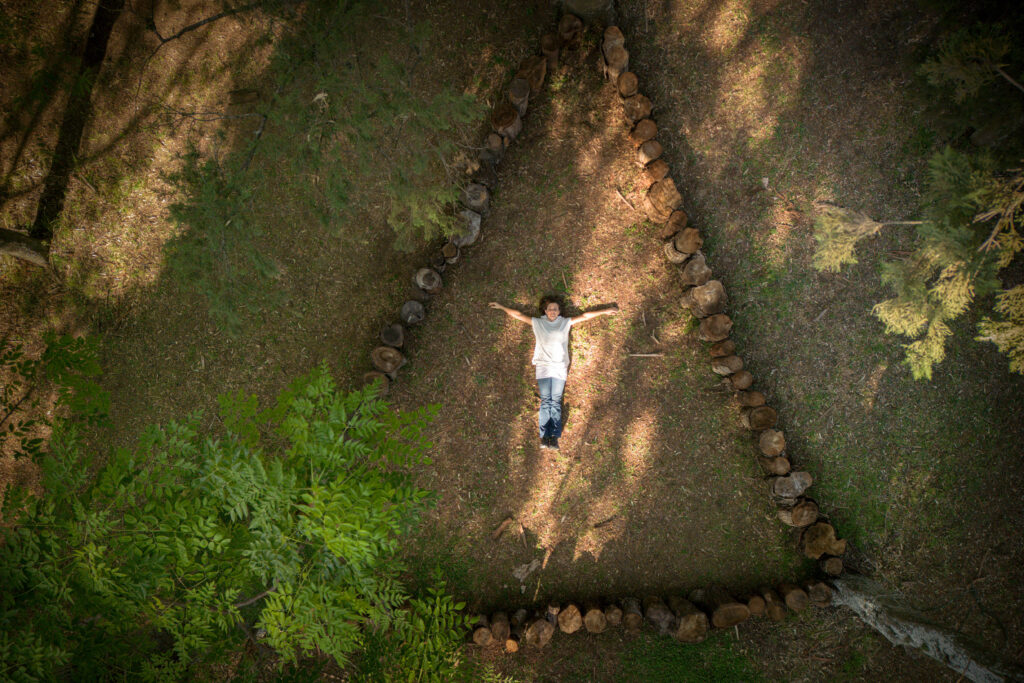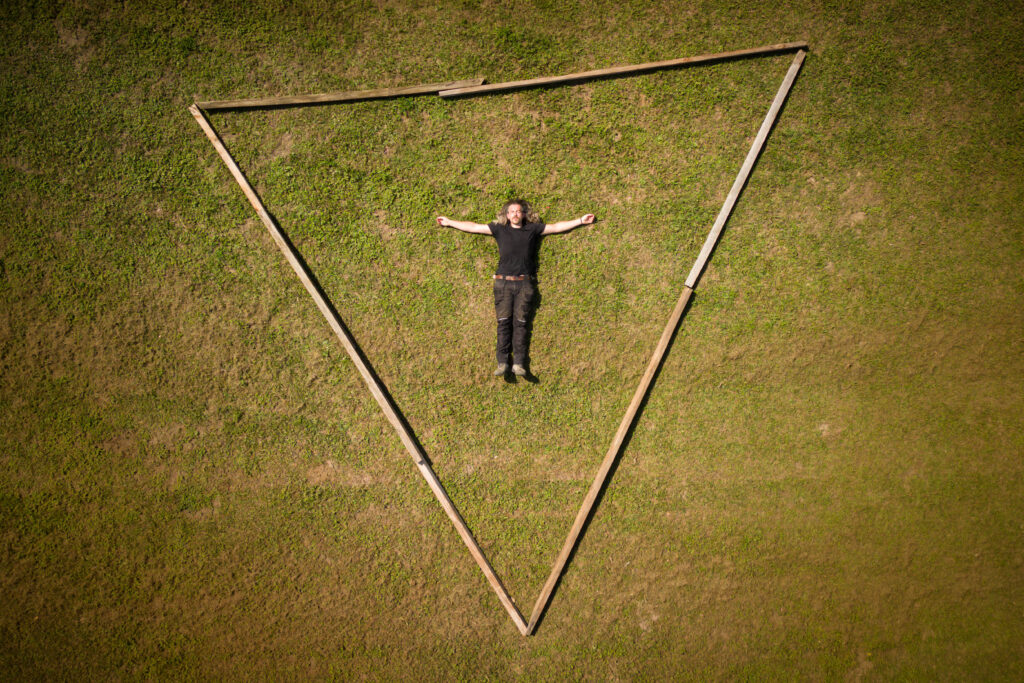Tree-Angle
Tree-angle is a Landart piece that explores the symbolism of the universe, particularly the duality of the yin and yang energies related to wholeness. This principle explains the existence of two opposing but complementary forces that are essential in the universe. Yin is associated with femininity, darkness, passivity, and earth, while yang is linked to masculinity, light, activity, and the sky. Both energies are necessary to maintain universal balance.
The artwork consists of two triangles, one representing yin and the other yang. The yin triangle is composed of 60 logs, 3 trees, and 1 woman in a forest, while the yang triangle is made up of 9 wood planks and 1 man in a grass field. Both triangles when overlapping are positioned to create a six-angle shape or hexagon, which is also symbolic in nature.
The hexagon is a significant shape that represents organization, efficiency, perfection, and balance in various cultures and traditions. Its six sides symbolize the unity and balance of the six directions: north, south, east, west, up, and down. Moreover, it has mathematical significance, as it represents the perfect balance between structure and flexibility, allowing for a variety of aesthetically pleasing and mathematically precise tessellations.
In the Tree-angle Landart piece, the hexagon serves as a unifying shape that brings together the two triangles representing yin and yang energies. It symbolizes the balance and harmony that can be achieved when these opposing forces come together in unity. By connecting the two triangles, the hexagon serves as a reminder of the interconnectedness of all things in the natural world, emphasizing the significance of maintaining universal equilibrium.
The yin triangle represents the feminine energy and its connection to the earth, nature, and the forest. The use of logs and trees in the triangle represents the groundedness and rootedness of this energy. The woman’s presence in the triangle adds a human element and represents the nurturing and caring qualities of the feminine energy.
The yang triangle, on the other hand, represents the masculine energy and its connection to the sky, openness, and expansiveness. The use of wood planks in the triangle represents the construction and innovation that are associated with the masculine energy. The man’s presence in the triangle represents the active and ambitious qualities of the masculine energy.
Together, the two triangles form a hexagon, symbolizing balance and harmony between the opposing forces of yin and yang. The artwork highlights the importance of both energies and their interdependence in maintaining universal equilibrium.
In summary, Tree-angle is a thought-provoking Landart piece that uses the symbolism of the triangle to explore the duality of yin and yang energies. The use of natural materials such as logs, trees, and wood planks in the triangles creates a connection between the artwork and nature. The hexagon shape symbolizes balance and harmony, underscoring the significance of both yin and yang energies in maintaining universal equilibrium.
Event
_Info
_Organized
Natur-Ars
Yatoo
GNAP Argentina
_Curator
_Producer
Claudia Cerminaro
Natalia Abot
Artwork
_Dimensions
Width / 7 m
Lenght / 7 m
_artists
Jordi NN
_Location
Yin Tree-angel
34°20’5.1717″ S
59°30’33.3003″ W
Yang Tree-angel
27°57’11.4322″ S
58°47’44.9379″ W
_Material
Yin Tree-angel
60 Logs
3 Trees
Yang Tree-angel
9 wood planks
Grass field

